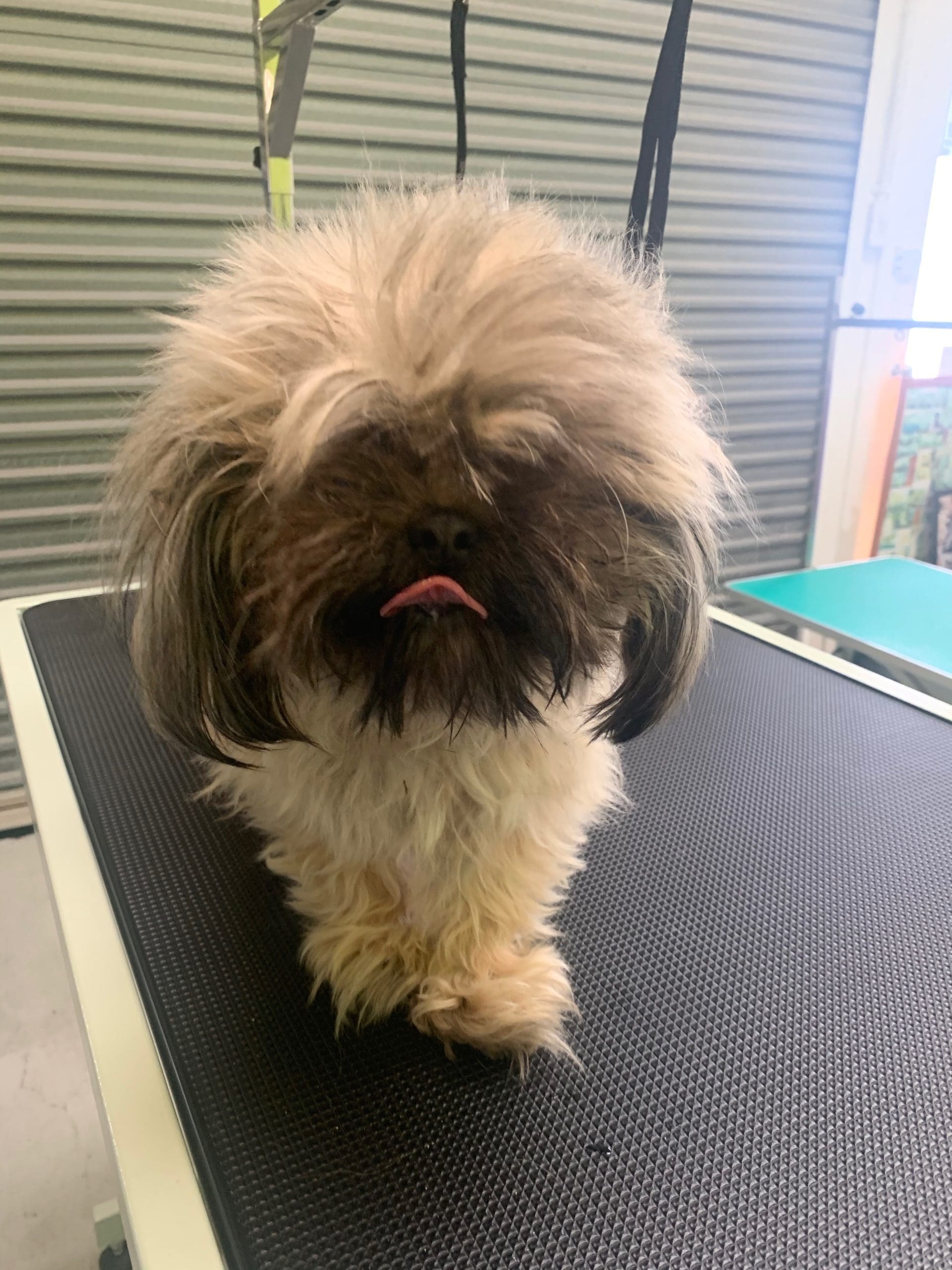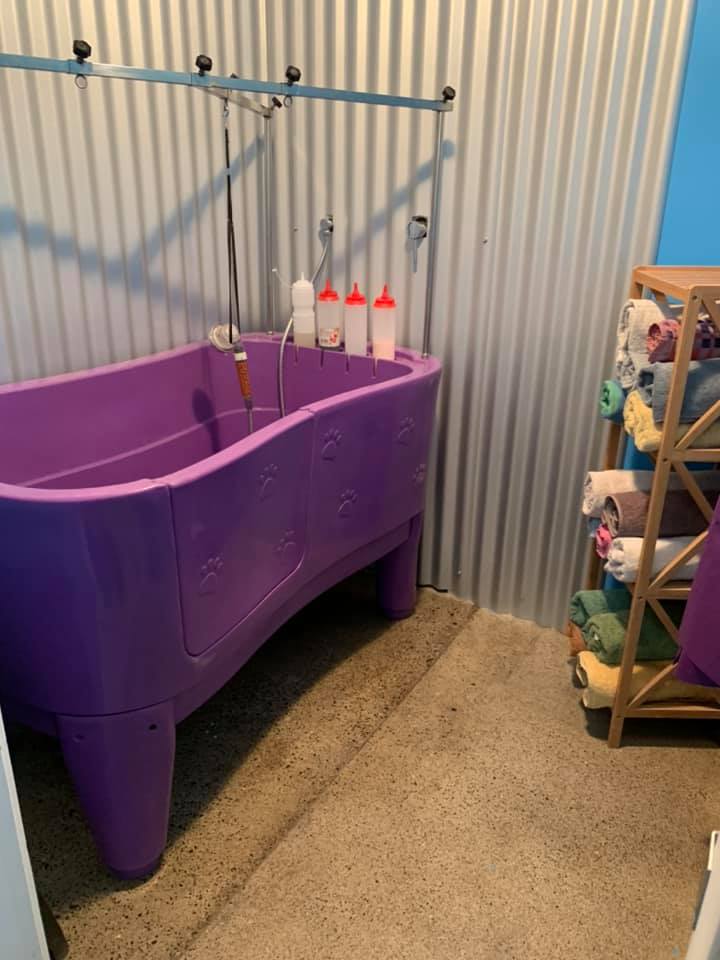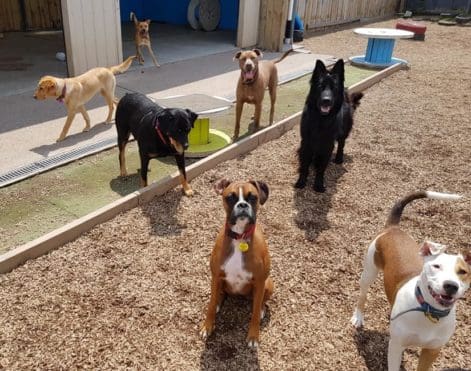A guide to grooming your dog (Part 1)
If you have a dog, or are thinking of welcoming a pet dog into your life, it’s important that you know about grooming and bathing care. Bathing and grooming your dog will not only keep them clean and healthy, but you and your home as well.
From training your dog so they learn to enjoy bath time to grooming different areas of your pet’s body, you’ll find everything you need to know in this handy guide. So let’s get started!
Why bath your dog? Bathing your dog when needed is an important part of general pet care. For dogs with healthy skin and a healthy coat, the most common reason to bathe is to remove an unpleasant odour or because they’ve accumulated dirt on their coat.
The benefits of bathing can include cleaning the skin and coat which helps to remove loose hair, scale and debris and improve the hair coat’s shine.
For dogs with specific skin conditions, bathing may be part of their medical treatment plan as recommended by their vet.
How Often to Bathe Your Dog
How often to bathe your dog will vary between each individual dog and their particular needs. Essentially, dogs should only be bathed when necessary.
Bathing is generally required when a dog has an unpleasant odour** or they’ve accumulated dirt/mud on their coat.
So if your dog smells normal (remembering that most dogs have a healthy dog smell which is not unpleasant) and they are not dirty, then bathing is probably not necessary at that stage.
If dogs are bathed too frequently this can dry out their skin and hair coat and may cause problems. Only bathing when it is necessary should help to prevent the skin drying out due to excessive bathing as the natural oils on the skin and coat won’t be stripped away too frequently.
Dogs with skin problems may require different bathing schedules as part of their treatment plan and your local vet can provide advice.
Other dogs who go swimming may require less bathing as this activity can function like a bath. Remember, if you do allow your dog to swim occasionally, supervise them at all times and stick to safe and shallow waters where your dog can always touch the ground.
** If you notice an unpleasant odour from your dog, this could be caused by rolling in something that smells unpleasant, however, if you can’t identify an external cause your dog should be checked by a vet to rule out any medical causes of an unpleasant smell such as skin or ear problems.
Tips On How to Bath your Dog
Two Important Things to Remember When Training Your Dog to Enjoy Bath Time is:
- Teach your dog to associate bathing with great rewards or the things they love.
- Take things slow and easy so that they feel relaxed and comfortable.
If your dog joined the family at an older age, the same steps apply: approach bathing in a gradual, calm and patient manner, and give your dog lots of praise and rewards along the way, making each and every bathing experience a positive one.
Brush: If your dog has any mats or tangles it may be a good idea to give them a nice brush and trim off mats/knots before bath time.
Water: Wet your dog’s hair all the way to the skin working from the chest/neck area down the back and sides of your dog towards the tail. If you’re using a tub let the water run down the drain so it doesn’t fill up.
Avoid wetting the head area as dogs are very sensitive there. Take care to avoid the eyes, ears, nose and mouth areas. For many dogs, the general head area is better cleaned by gently using a damp face cloth.
It’s important to prevent water getting into the ears as this can predispose towards an ear infection.
Shampoo: Once the body is thoroughly wet, apply some hypoallergenic dog shampoo (having previously applied a test patch to your dog to ensure there’s no irritation). Start at the chest first before gradually moving out to other areas of the body, making sure you get right down to the undercoat.
Massage: After the chest area, gently massage the shampoo onto the shoulder area, down your dog’s sides, back, front legs, back legs and tail area. Once they’re comfortable you can quickly wash their underside (note this area can be ticklish and sensitive for some dogs).
Rinse: After shampooing your dog, gently rinse out the shampoo thoroughly using your fingers to ensure that you get through the undercoat.
Towel
Towel: Now that your dog’s bathed you’ll need to help dry them off (see ‘Drying your dog’ below).
Treats: Remember to offer some tasty dog food treats to reward for calm behaviour and for staying with you, when you can throughout the activity. Also reward at the beginning and the end. When bathing has finished other rewards may include new chew toys or playing a favourite game. This will help your dog learn to love bath time making the experience fun and enjoyable for the both of you.








